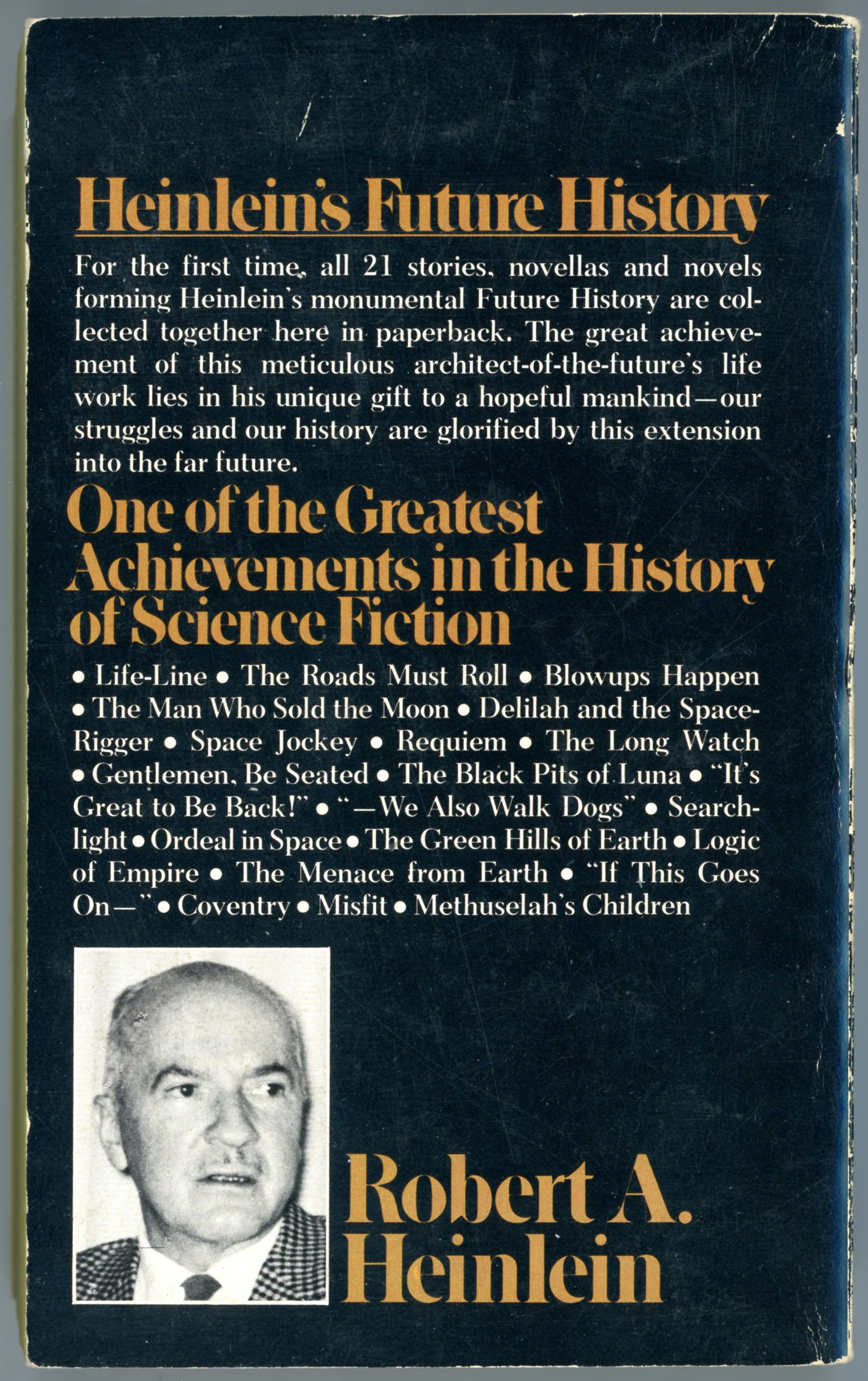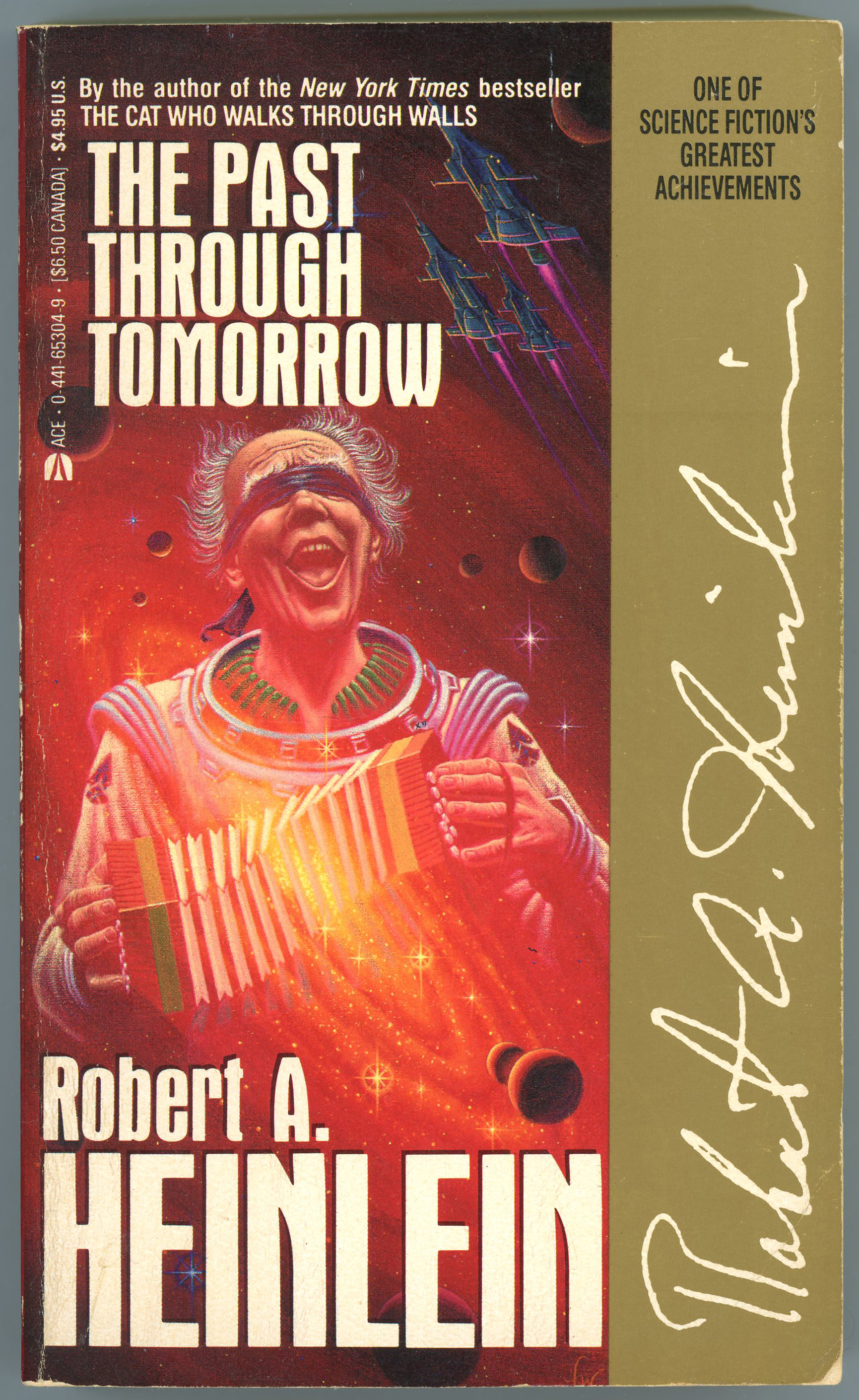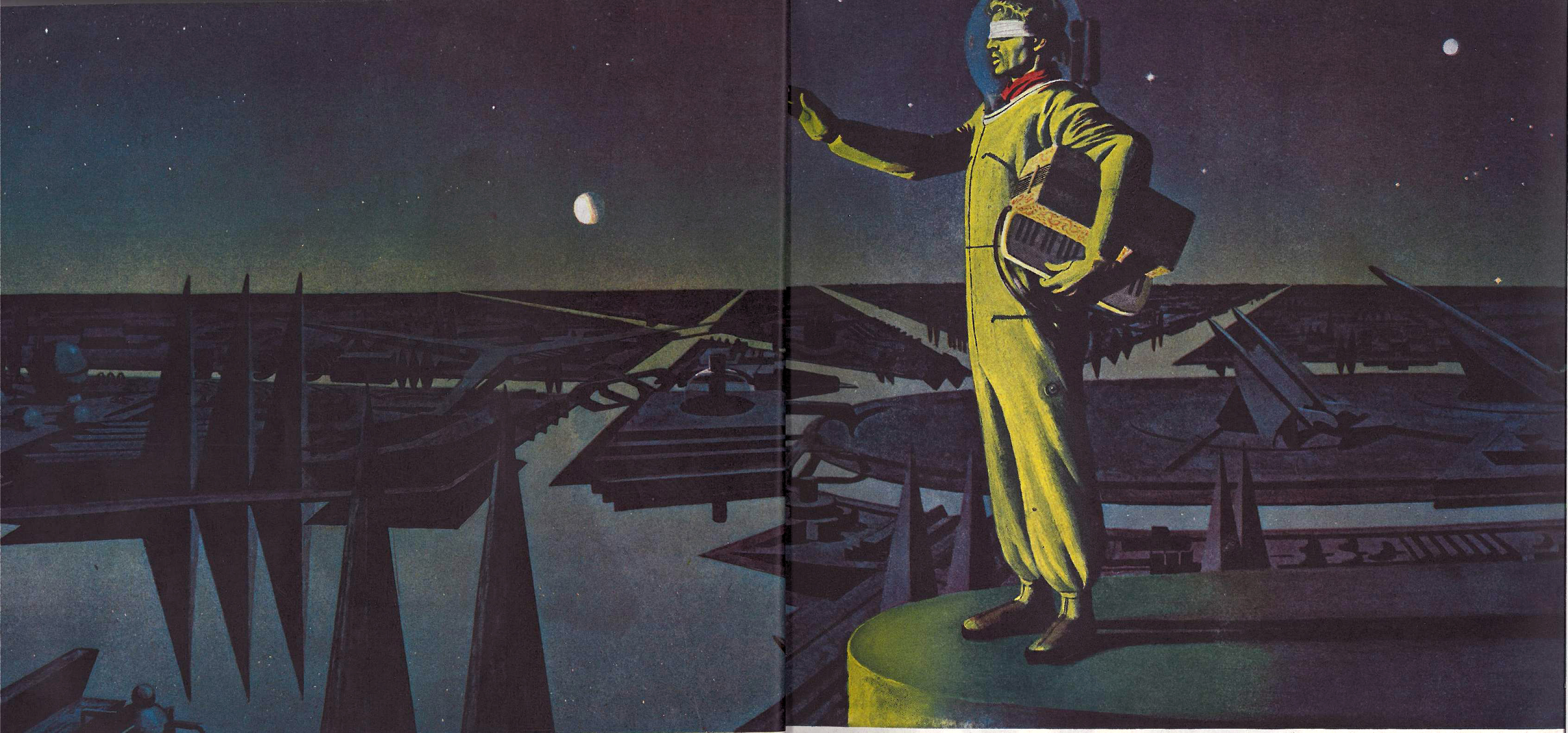Now, t h i s is an interesting cover.
I first “noticed” it among six small black & white images illustrating the evolution of the logo and cover design of Astounding Science Fiction – from February of 1935 through April of 1965 – in James Gunn’s Alternate Worlds: An Illustrated History of Science Fiction (specifically, on page 152). Only later, when I started building my collection of issues of Astounding and saw scans of the cover at VISCO (The Visual Index of Science Fiction Cover Art) and Archive.org, was I able to fully appreciate the balance of style and symbolism inherent to the composition.
I first thought that it was created by William Timmins. But, I was wrong.
The painting was created by Alexander Cañedo (Alejandro de Cañedo) who subsequently completed nine other covers for Astounding Science Fiction, encompassing issues published between September, 1947, and July, 1954. Of these nine covers, only one other painting (like that illustrated below) actually pertains to a story published within “its” issue, the other eight covers being purely – very – symbolic and allegorical, such as this cover for August of 1948: The other “literal” cover is for December of 1947, representing Clifford Simak’s tale “Aesop”.
That issue, coincidentally, happens to be my favorite Cañedo cover: The illustration powerfully uses light and shadow (notice that illumination comes from the background?), and a small number of colors (shades of blue, gray, yellow, and orange) to depict four elements inherent to the story: Wobots. Robots. (Well, just one wobot. I mean robot.) A wabbit rabbit. A dog. (Dogs figure prominently in Simak’s earlier tales.) And, a post-nuclear-holocaust future in which mankind is an afterthought: A mushroom cloud rises in an otherwise empty background.
You can read more about the interestingly incongruous relationship between John W. Campbell, Jr., and Alexander Cañedo, in Alec Nevala-Lee’s October, 2018 blog post, The Beauty of the World.
As for Eric Frank Russell’s tale “Metamorphosite”? It’s been anthologized a number of times since its original publication, perhaps most prominently in the Del Rey / Ballantine Classic Library of Science Fiction’s The Best of Eric Frank Russell, of 1978. Though I’ve not read too much of Russell’s body of work (I’d really like to get around to “Sinister Barrier”, from Unknown, October of 1939), I found it very similar – in respects positive and negative – to “Dreadful Sanctuary”, published in Astounding in June and July of ’48: The plot, premise, and setting of the story are clearly delineated early on, and, genuinely interesting; the events of the story – whether action or contemplation – are crisply paced, without extraneous diversions that would cause the story to “lag” or go flat; the technology sensibly futuristic, yet neither driving the tale nor overwhelming the centrality of the characters. And yet, like “Dreadful Sanctuary” … which I think is the better of the two … “Metamorphosite” suffers from the one-dimensionality of the protagonist and his allies, who confront and overcome challenges and dangers far too easily, leaving very (or no) room for doubt, growth, or change.
Again, though, one point in the story’s favor lies in its premise and conclusion (small spoiler alert!): It posits and is based upon a future in which humanity has extensively colonized other worlds, to the extent that as a result of the enormous variation in the physical conditions of these planets, and the passage of time, speciation has occurred on an interstellar scale, and humanity no longer exists solely as homo sapiens. Though the specifics escape me as I compose this post (!), I think that this topic has been addressed in depth by Isaac Arthur in one of his many SFIA videos.
________________________________________
For a few minutes he stood quietly regarding the shadows and musing within himself.
He was alone — alone against a world.
It didn’t bother him particularly.
His situation was no different from that of his own people who formed a solitary world
on the edge of a great Empire.
He’d one advantage which so far had stood him in good stead: he knew his own powers.
His opponents were ignorant in that respect.
On the other hand, he suffered the disadvantage of being equally ignorant,
for although he’d learned much about the people of the Empire,
he still did not know the full extent of their powers.
“In the awful struggle for life on new and hostile worlds, you, too, sank,” Harold continued.
“But you climbed again, and once more reached for the stars.
Naturally, you sought the nearest system one and a half light-years away,
for you had forgotten the location of your home which was spoken of only in ancient legends.
We were three light-years farther away than your nearest neighboring system.
Logically, you picked that — and went away from us.
You sank again,
climbed again,
went on again,
and you never came back until you’d built a mighty Empire on the rim of which we waited,
and changed, and changed.’’
________________________________________
Some Other Things
Eric Frank Russell…
…at Wikipedia
…at Internet Speculative Fiction Database
Alexander Cañedo…
… at Wikipedia
…at Internet Speculative Fiction Database
…and…

















